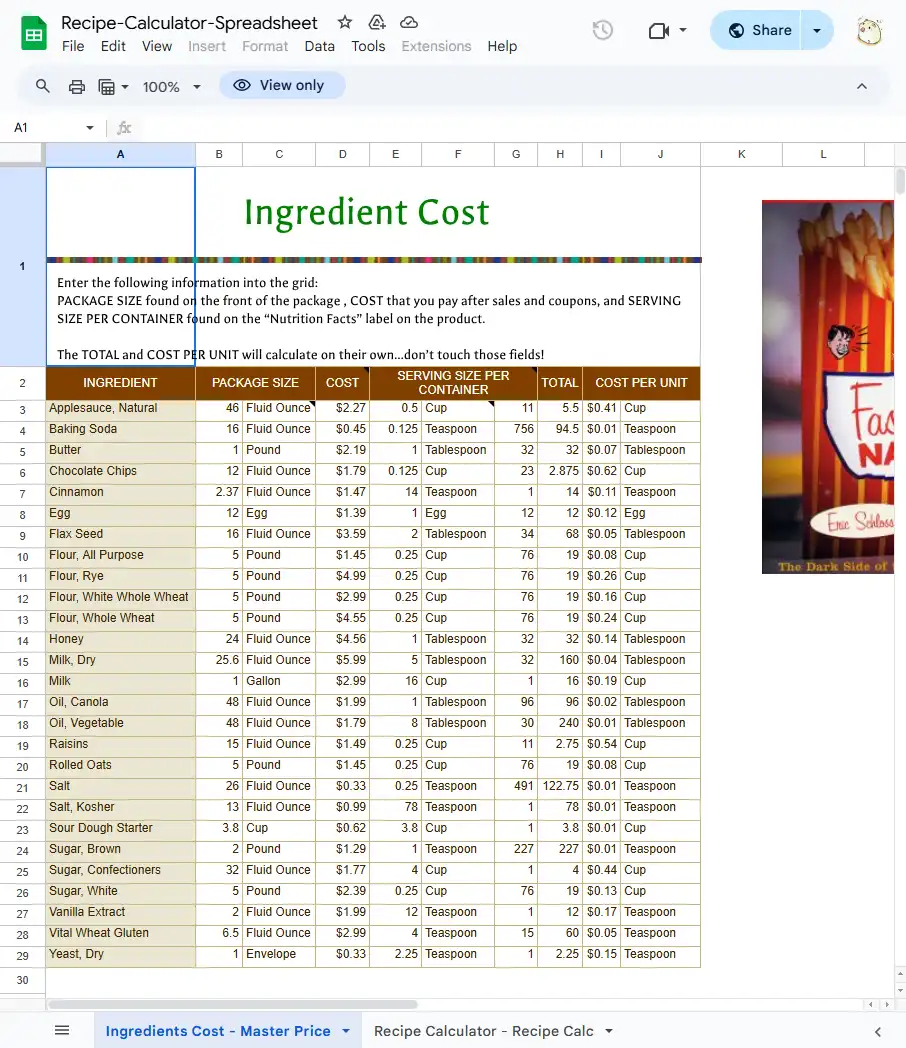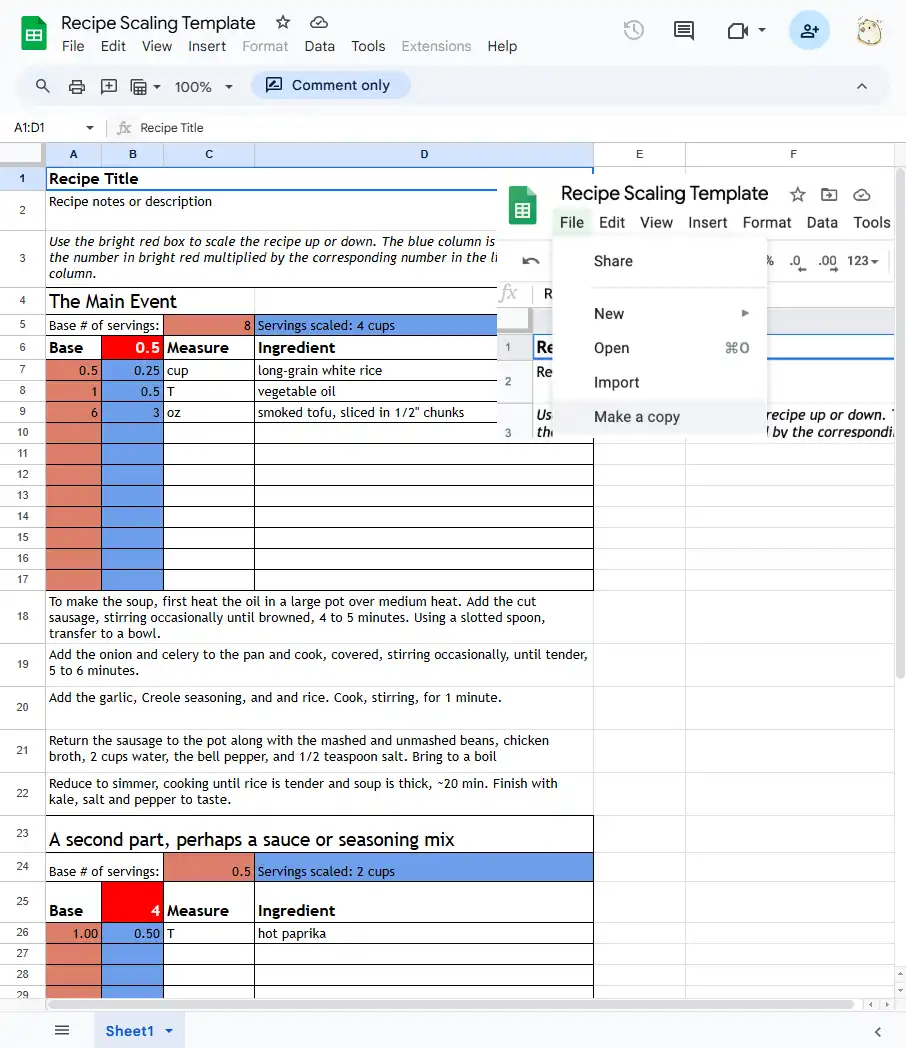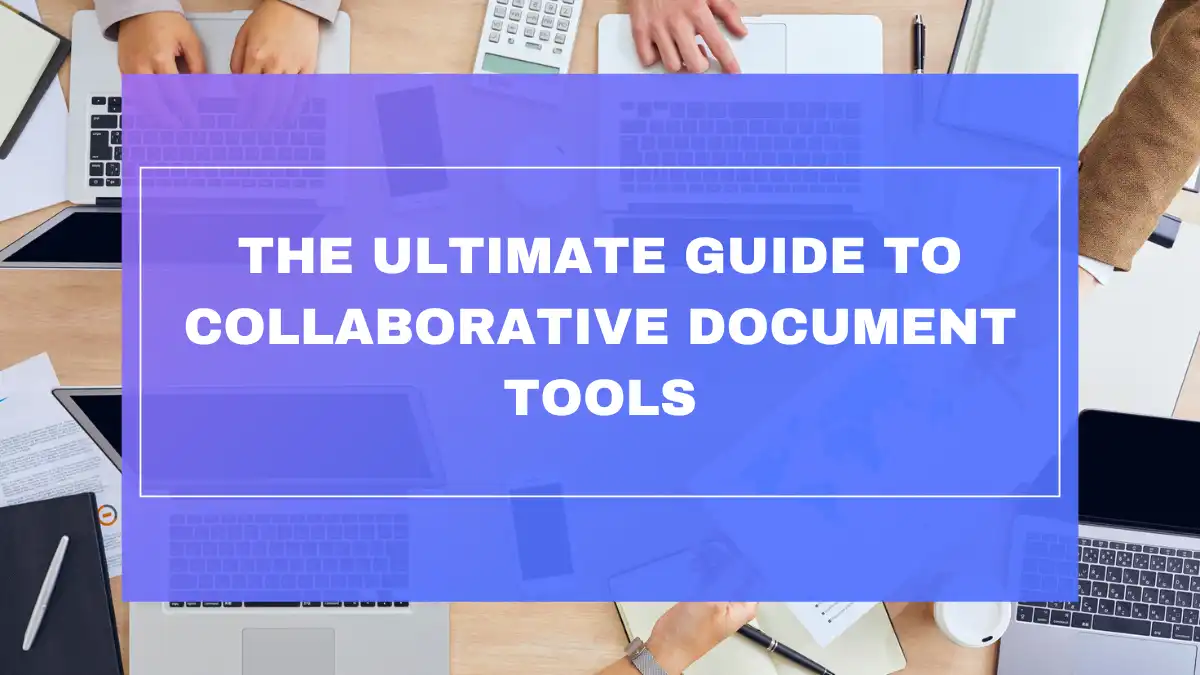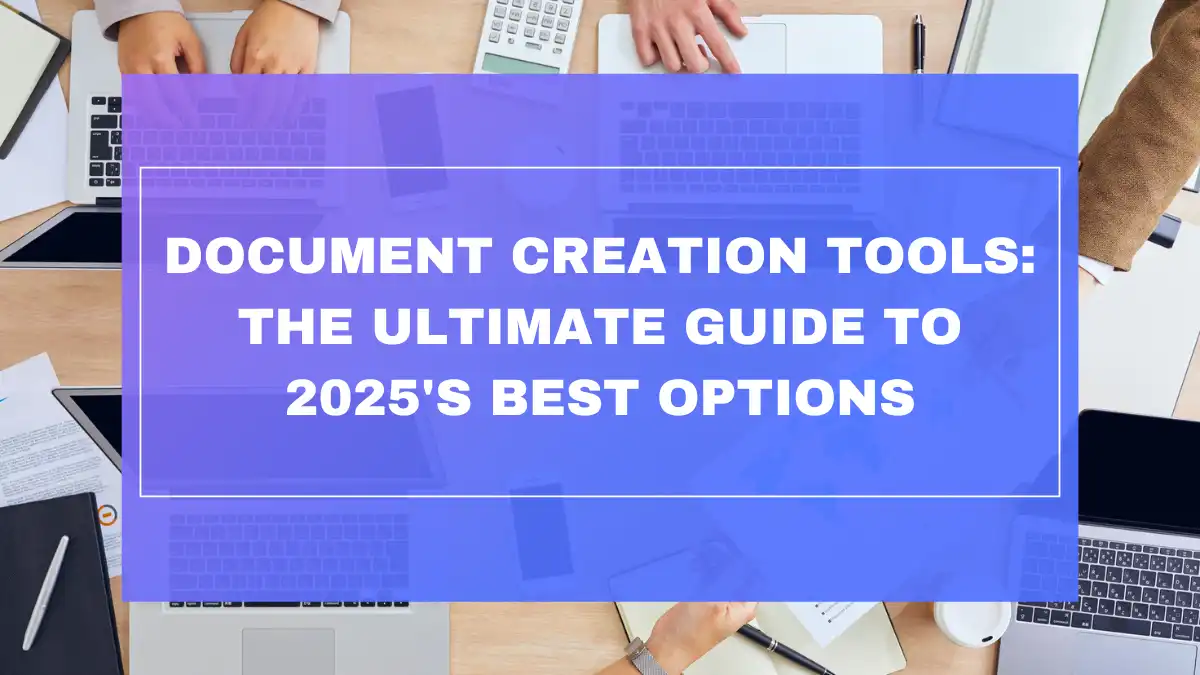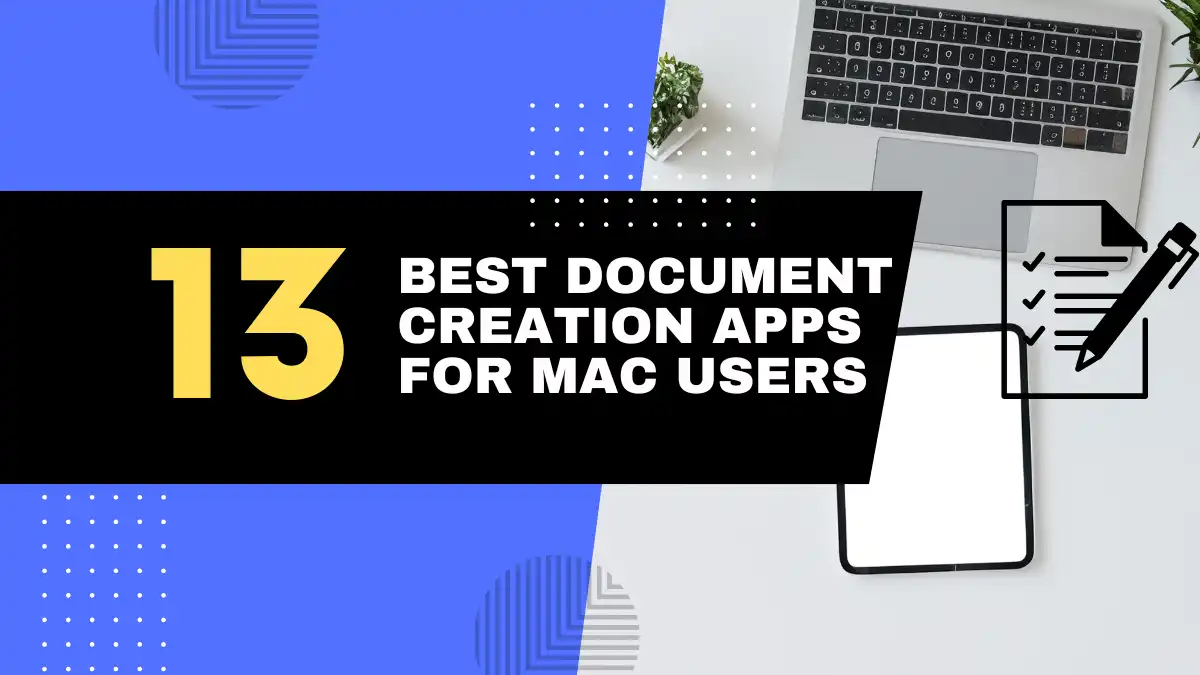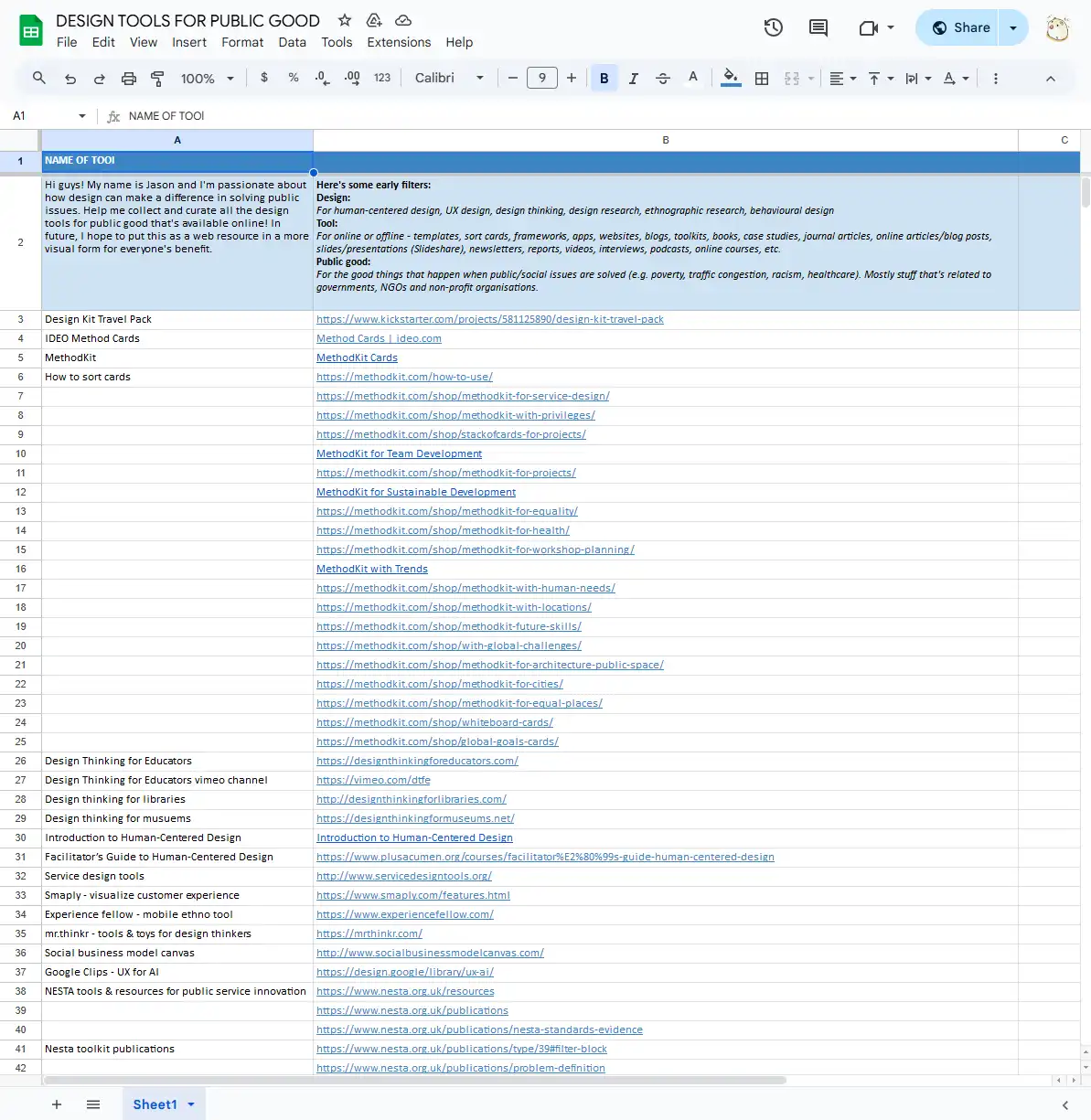
The document titled “Design Tools for Public Good” is a Google Spreadsheet curated by Jason, aiming to compile and organize various design tools that can be utilized to address public and social issues.
Document Overview:
This spreadsheet serves as a repository for tools and resources related to:
- Design Disciplines: Including human-centered design, UX design, design thinking, design research, ethnographic research, and behavioral design.
- Tool Types: Encompassing templates, sort cards, frameworks, applications, websites, blogs, toolkits, books, case studies, journal articles, online articles/blog posts, slides/presentations, newsletters, reports, videos, interviews, podcasts, and online courses.
- Public Good Applications: Focusing on solving public or social issues such as poverty, traffic congestion, racism, and healthcare, primarily targeting governments, NGOs, and non-profit organizations.
Examples of listed tools include:
- Design Kit Travel Pack: A resource aimed at facilitating design thinking processes.
- IDEO Method Cards: A set of cards showcasing various methods for inspiring design.
- MethodKit: A collection of cards designed to assist in project development and team facilitation.
- Design Thinking for Educators: A toolkit tailored to help educators apply design thinking in their teaching practices.
Intended Audience:
This document is intended for designers, educators, public sector professionals, and non-profit organizations seeking tools to apply design methodologies for public good initiatives.
Use Cases:
- Resource Compilation: Provides a centralized collection of design tools applicable to various public and social challenges.
- Project Development: Assists teams in selecting appropriate tools and methods for project planning and execution.
- Educational Purposes: Serves as a reference for educators and trainers teaching design thinking and related methodologies.
Document Evaluation:
The spreadsheet is a valuable starting point for individuals and organizations looking to leverage design tools for public good. However, it could be enhanced by including detailed descriptions, usage guidelines, and direct links for each listed tool to facilitate easier access and application. Additionally, categorizing the tools based on specific applications or design stages could improve usability.
Documents URL:
Copyright Notice:
This article is collected from internet information by Mika and manually written and organized. Unauthorized reproduction is prohibited.

